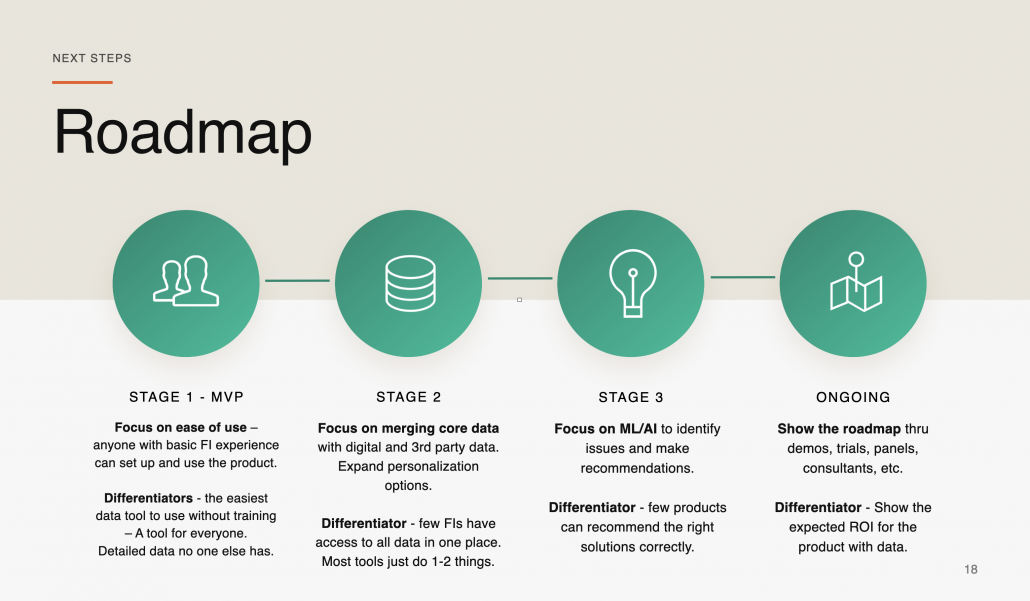Experience Strategy
Once I have collected and synthesized the data, I need to get as much feedback as I can from stakeholders, designers, developers to develop opportunities and form the overall experience strategy . I can gather feedback and opportunities via ideation workshops and then craft future-state versions of journey/experience maps and consolidated workflow diagrams. Once opportunities are prioritized, I can then create a viable product roadmap which shows how and in what order groups of opportunities should be rolled out.
Activities
- Ideation Workshop / Wall Walk
- Opportunity Generation and Evaluation
- Future-state Journey Maps and Workflows
- Opportunity Prioritization
- Product Roadmaps
Ideation Workshop / Wall Walk
The Wall Walk is a critical collaboration step in the design process. It allows stakeholders and those outside of the direct research team to internalize and start to build an understanding of the consumer through affinity data immersion. It’s often coupled with a set of opportunity generation, backlog creation, and prioritization exercises to focus work in the next phase of the design process.
Wall walks:
- Show the value of research — not just one area was researched — we researched everything
- Show the enormity and scope of research in a digestible, self-paced way
- Validate known issues with real words from customers
- Uncover ‘aha’ moments (ex. “I never knew there were so many types inventory issues”)
- Get stakeholder buy-in for current and future phases of the project
- Reveal group dynamics
- Expose business and tech issues not uncovered during research or initial stakeholder and tech interviews
- Create opportunities
Opportunity Generation and Evaluation
Throughout the entire research phase of the project, I am identifying and gathering opportunities. Even it they are mundane or unrealistic, it is important to capture ideas from designers, developers, users, business leaders and competitors. We’ll then review each feature, place it in context with the data findings. We will note the number of times each opportunity has been submitted, if it applies to multiple areas of the system or process. We will then give a preliminary rank toe each opportunity, based on benefit to user, design/dev lift required, business benefit, etc. We will use these preliminary rankings as a starting point for an opportunity prioritization workshop
Future-state Journey Maps and Workflows
Usually layered upon the current state journey map, this will show the potential effect of adding new or updated opportunities/features, flows, and functions. The map will illustrate which areas will benefit most from change and help prioritize opportunities into a viable roadmap. Stakeholders can see where the most pain is alleviated or has the biggest impact and prioritize accordingly.
Opportunity Prioritization
We’ll take all of the opportunities we created throughout the project, consolidate them (noting the times each was mentioned) and then rank them as a group accounting to several variables.
Ranking variables usually include:
- benefit to user
- business/financial impact
- business lift
- tech lift
By the end of the workshop we’ll have plotted a matrix of all opportunities based on these ranking variables. This output be the primary document used to create an ordered backlog of features and functions to develop.
Product Roadmaps
Usually a one page document that illustrates which sets of features to build together in stages.
A roadmap can illustrate which features:
- Must be included for the MVP
- Should be exposed to a specific user base first
- Are dependent with one another
- Require additional planning







